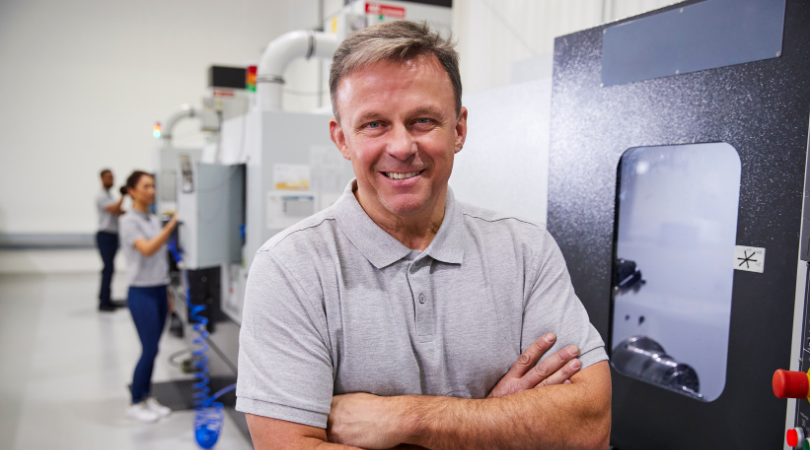Can We Put An End To Keeping Cnc Post Processor Technologies As Mysterious And Black Box Technologies?
My first question is, "Should CNC post-processing remain an enigmatic (mysterious) and black box (secret) technology that only a very small minority can operate?"
Our response is a resounding "no."
Let's begin by examining why CNC post-processing is currently treated as a mysterious and black-box technology:
1. Complexity of Current CNC Post Processor Editors: The existing CNC post-processor editors within CAM software are exceedingly challenging to use. Often, they rely on programming languages like Visual Basic or JavaScript and function as basic configuration files or text editors. These editors lack user-friendliness, making it difficult to tailor post-processors for unique requirements, such as angular tool support, multi-channel mill turn functionality, specialized positioning moves between operations, or distinct positioning styles limited to simultaneous operations.

2. Programming Expertise Needed: Proficiency in G Codes (NC programs) isn't sufficient for the effective use of these post-processor editors. A mastery similar to that of a software programming professional is essential to exploiting the full potential of these tools.
3. Restricted Access to CNC Post Processor Editors Within CAM software: Some CAM vendors restrict or partially close access to post-processor editing for end users. This illogical practice necessitates users to rely on CAM resellers for even minor post-processor modifications.
4. Limited Documentation and Insufficient Training Materials: Comprehensive resources to facilitate learning and mastering these post-processor editors are scarce. The available information often falls short of adequately training users in their use.
5. Knowledge Hoarding: Many individuals withhold their knowledge and expertise in CNC post-processor editing. This reluctance to share stems from financial incentives, as some individuals profit from their expertise. Moreover, certain resellers discourage users from learning post-processor editing to maintain dependence on their services. This, in turn, supports resellers in pushing newer CAM versions.
Collectively, these factors contribute to CNC post-processing being perceived as an enigmatic and black-box technology limited to a select few. However, this status quo must change. CNC post-processor development/editing is a pivotal step bridging CAM to CNC. Effective post-processing is indispensable for optimizing CNC machining efficiency.
We firmly believe that the classification of CNC post-processing as a black-box technology should be challenged. We argue that more individuals can acquire proficiency in CNC post-processor operations.

There are 2 significant pieces of evidence that lead me to think like that on this matter.
1. There are many talented CAM programmers/CNC machinists: In some companies using CAM software, I have observed that after a while, some users become better at CAM programming than the technical trainers from the CAM software vendor. Have you also witnessed a situation like this?
Using CAM software continuously for various real part cuttings enhances the user's experience in using the software. Furthermore, the manufacturing experience of the person operating the CNC machine in the field also increases over time. When this manufacturing experience is combined with the capabilities of the CAM software, it results in a powerful user experience.
On the other hand, individuals providing CAM training may learn all the commands and details of the software very well, but if they lack real-world experience, they might not be as proficient as actual users in knowing which commands to use and how to make necessary adjustments for those commands.
2️. Some CAM programmers/CNC machinists have extensive knowledge of G Code programming. Writing G Codes (NC programs) manually is often presented as a bad thing. I disagree. What I've seen for years is that those who can write G codes manually are the ones who can process a part in the shortest time possible. They achieve remarkable results by combining their profound manufacturing knowledge with their NC programming skills.
The need for manual programming has almost disappeared after the advent of CAM software. Of course, when you have the CAM technology, you should use it instead of writing G codes. However, knowing how to machine a part with manually written G codes is very important knowledge that every CNC machinist should have.

My questions are:
➡Considering these points, do you believe CNC post-processing should remain an enigmatic and black box technology accessible only to a very small minority?
➡Why can't individuals who become better at using a CAM software than their trainers also create their own post-processors better than the CAM vendor?
➡Why can't those who can write G codes manually become CNC post-processor experts? They already possess the most important information since they know how G-codes work.
I can already hear objections: CNC post-processors are a highly sensitive matter, and those who are not knowledgeable should definitely not meddle with them, etc.
I don't agree with these objections. The examples of some users becoming better at using the CAM software than their trainers over time and people who can manually write G codes on their own are 2 strong pieces of evidence to the contrary.
What is lacking here is an easy-to-use, powerful CNC post-processor design tool. Currently, there are very few CNC post-processor editors that can be used by CAM programmers.
With #MANUSpostdeveloper, we are changing that. We proudly state that anyone interested in improving their post-processing skills will now have the chance with #MANUSpostdeveloper.
Aug 2023 . MANUS